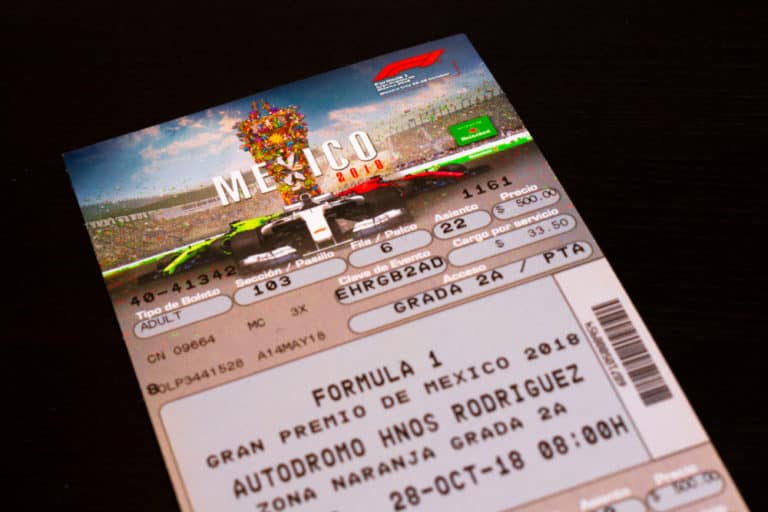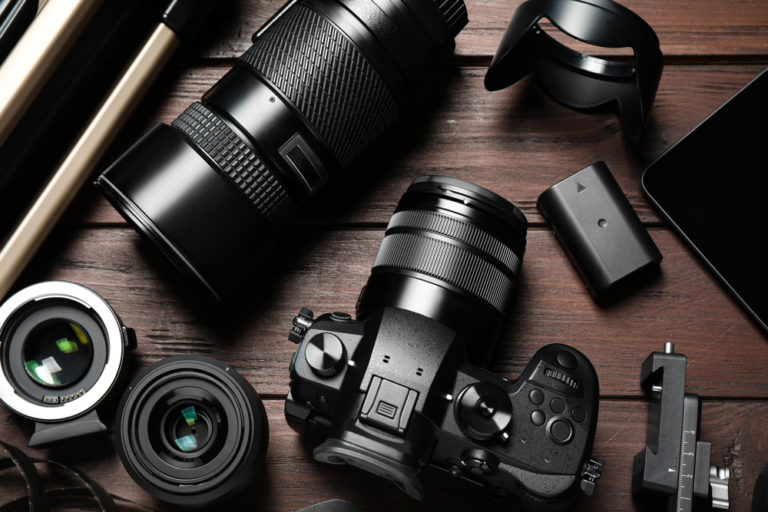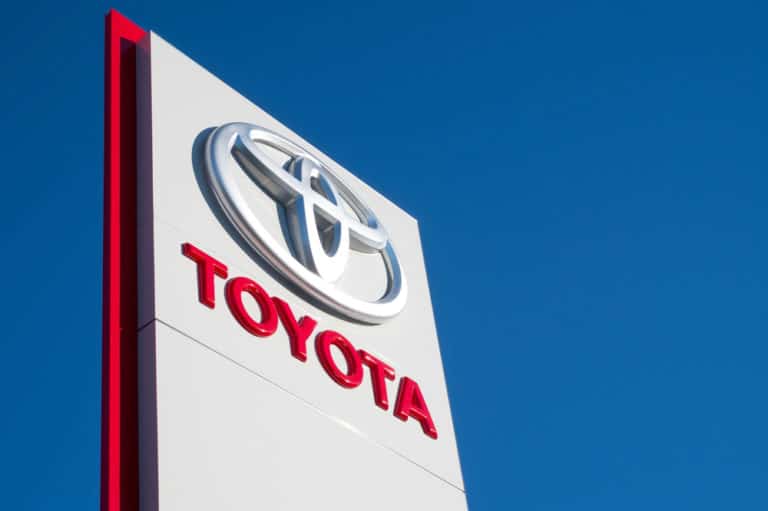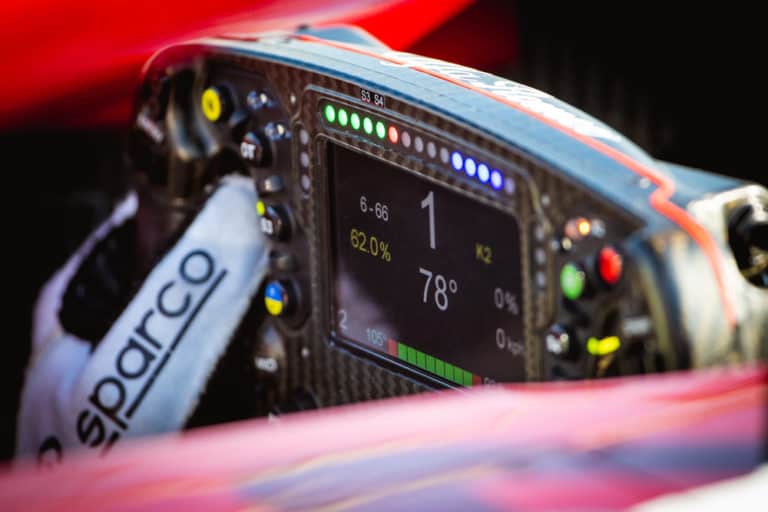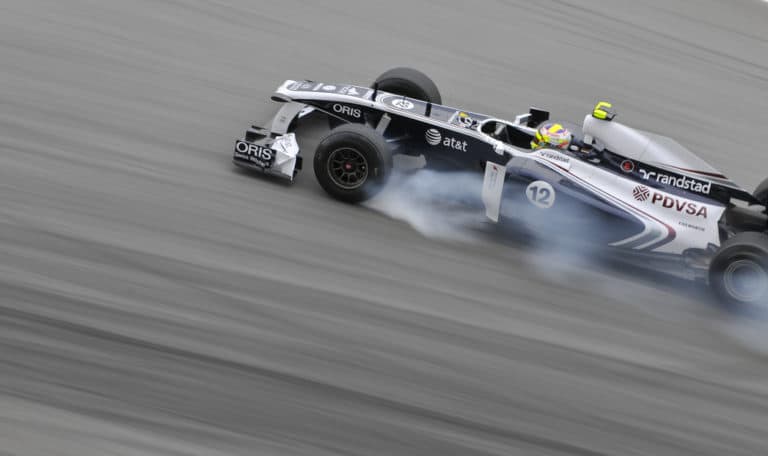Driving a competitive Formula 1 racing car requires the driver to operate at the very peak of physical fitness. They must have super-fast response times, high levels of intelligence, the ability to multitask and think tactically and strategically while having a deep understanding of the F1 car’s technologies. Oh yes, It also helps that they are world-class drivers!
Unfortunately, the F1 teams do not publish the exact cost of their racing cars’ steering wheels; however, it is estimated that Formula 1 steering wheels cost between $40,000 and $100,000. These devices are highly complex and serve multiple purposes in the car.
Each driver’s steering wheel is uniquely designed for the driver. Even within teams, the two drivers may have different steering wheels as defined by the F1 drivers’ personal preferences. As we explore in the article, there is a valid reason why these instruments are so expensive.
If you’re looking for some F1 merchandise, check out the awesome stuff at the official F1 store here.
Why Is A Formula 1 Steering Wheel So Expensive?
The steering wheel used in Formula 1 cars acts as the primary repository of information for the driver.
F1 Steering Wheels Are Made From Expensive Materials
The primary materials used to construct an F1 steering wheel are
- Carbon fiber
- Fiberglass
- Silicon
- Titanium
- Copper
Each wheel comprises hundreds of different parts. The components consist of the steering wheel, the display, circuitry, circuit boards, carbon enclosure, quick release mechanism, electrical connectors, and steering.
Drivers expect to use 3 to 4 steering wheels during a season, and each wheel takes up to 80 manhours to build.
The Formula 1 Steering Wheel Is Very Important
Without the modern F1 steering wheel, it would be impossible for drivers to operate at the levels they need to.
F1 Wheels Use The Same Principles As Military Aircraft
Fighter jets use a system called HOTAS (Hands-On Stick And Throttle) so that the pilot can
- maneuver the aircraft
- adjust the throttle setting
- activate the radio
- control the radar
- activate the defensive systems
- fire the ordinance
- turn the nose wheel steering
without taking their hands off the “stick.” It makes it possible to fully concentrate on flying the mission without looking down and finding the controls in the cockpit.
F1 Steering Wheels Help The Driver To Optimise The Workload
F1 racing drivers operate at the very limits of their own and the vehicle’s capabilities.
Driving an F1 car is very intense, and the workload is extremely high. At just one corner of an F1 circuit a driver would.
- Speed down a fast straight at 300 km/h (200 mph) in the company of competitors driving at the same speed, only inches apart.
- Apply a 6g braking force and slow down to 50km/h. F1 brakes have no assistance and need more than 150 kgs of muscle to activate.
- While turning into the corner, they will simultaneously adjust the differential to maximize the rotational ability of the car.
- Turn the steering wheel and experiences a 4g lateral (sideways) force.
- Speed down the straight while experiencing a 2g acceleration force.
- Where necessary, the drivers must also activate and deactivate the DRS wing.
- They also must manage the MGU-H and MGU-K systems to ensure the battery is sufficiently charged so they can defend or attack a competitor.
F1 cars lap most circuits in under 2 minutes. During this time, the driver will change gear at least once every 30 seconds, accelerate, brake, adjust the differential and brake balance, maneuver around an average of 18 corners and accelerate to maximum speeds down three or four straights.
The drivers must repeat this demanding workload in cockpits with temperatures exceeding 112 degrees Fahrenheit (45 degrees Celsius) for up to 70 laps over up to two hours.
While doing all of this, the driver must stay aware of many factors, including.
- The condition of the car’s tires.
- The brake and tire temperatures.
- The engine temps.
- Fuel levels.
- The condition and wear of the tires on each of the wheels.
- The position of their competitors and any threats they may present.
- The tactical opportunities while keeping the long-term strategic picture insight.
- Discussions relating to strategy and other factors with the team.
The driver must continually adjust brake bias settings, activate, and deactivate the DRS wing, maximize the energy regeneration systems, and act on the vast downloads of available information.
It would be impossible to cope with such a high workload without a central system delivering filtered data to the driver.
To keep entirely focused on the race, the drivers must not have to remove their hands from the steering wheel to activate any controls with no distractions.
The modern F1 steering wheel serves this purpose.
What Can An F1 Driver Control With The Steering Wheel?
Only the brake and accelerator controls are separate from the steering wheels. Everything else is available through controls mounted on the steering wheel.
Most F1 steering wheels contain 25 buttons and switches, the clutch, and the gearshift paddles.
Steering The Car
The primary purpose of the steering wheel is to maneuver the car.
The drivers must be able to turn the steering wheel, at full lock, without taking their hands off the wheel.
To optimize this, it must be the perfect size and shape. Most F1 steering wheels are 27 cm wide.
Releasing The Clutch And Selecting Gear
F1 racing cars use semi-automatic sequential gearboxes. This technology enables immediate selection of the next gear, up or down, by adjusting the paddle on the steering wheel.
The clutch is automatically controlled during the race. However, the clutch is engaged by pulling a paddle on the steering wheel at the start. Once the car moves, the clutch is automatically activated every time a new gear is selected.
Adjusting The Brakes
The steering wheel has several buttons and switches that enable the driver to change the car’s brake settings.
These controls enable the driver to optimize the braking into different corners by adjusting the braking force applied to the front and back.
The driver can also adjust the engine braking.
Adjusting The Differential Settings
Other controls allow the driver to change the amount of torque delivered to each wheel. The driver can adjust these settings several times through a corner.
By changing the torque to each wheel, the driver can use the engine to ‘steer’ the car through the corners. This setting can also prevent the inside rear wheel from spinning under harsh acceleration out of a bend.
The Drag Reduction System (DRS)
When the F1 car reaches the DRS zone, the following driver presses a button on the steering wheel, which lifts a flap in the rear wing and reduces the airflow drag.
Depending on the circuit, this can increase the speed by 10km/h (6 mph).
Controlling The Power Unit Settings
This switch controls the Power Unit modes and will impact both the internal combustion engine’s performance and the deployment of electrical energy of the MGU-K and change the recovery of energy of both MGU-K and MGU-H.
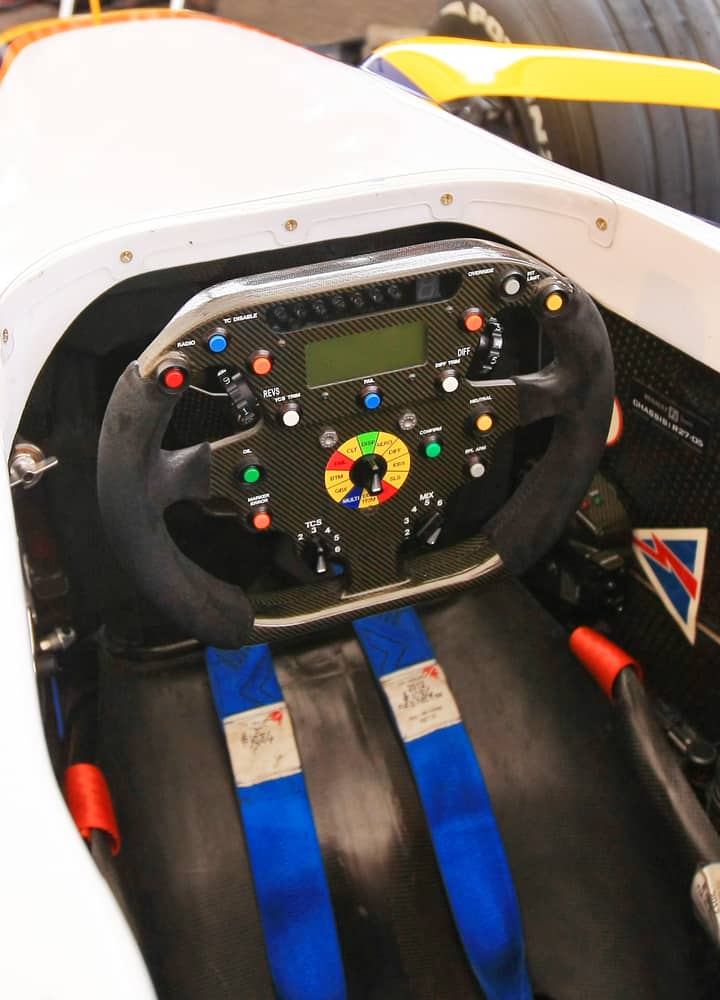
All Data Is Displayed On An Information Screen
The driver has access to more than 20 different sets of information.
The data includes
- The engine revs.
- The Real-Time Speed.
- Average speed.
- Fuel used.
- Fuel remaining.
- The wear rate of the tires.
- The Tire pressures.
- The speed needed to maintain the delta of a virtual safety car.
- Red, yellow, and black flag warnings from the race director.
- How far ahead, measured in time, is the car in front.
- Battery energy status.
- Braking System Bias.
- Messaging system from the team.
- Warnings from the race director.
- Lap Number.
- Laps To Go.
- The Best lap times.
- The current lap times.
- The Last lap Time.
- The difference in lap times.
Conclusion
Building an F1 car is an enormously expensive exercise, and even with the 2021 caps will still cost upwards of 145million (£102million). The steering wheel is a complex piece of equipment that takes many manhours to build and is personalized.
Considering the complexity of the wheel and its importance to the F1 driver at under $100,000 (£70,000), it seems a bargain!
References
- https://www.motorsportmagazine.com/articles/single-seaters/f1/how-much-does-an-f1-car-cost
- https://www.mercedesamgf1.com/en/news/2019/03/how-does-an-f1-steering-wheel-work/#:~:text=It%20controls%20the%20Power%20Unit,%2DK%20and%20MGU%2DH.
- https://www.motorsport.com/f1/news/the-steering-wheel-changes-mercedes-prepared-for-russell/6969374/
- https://www.motorbiscuit.com/f1-drivers-still-use-clutch/

